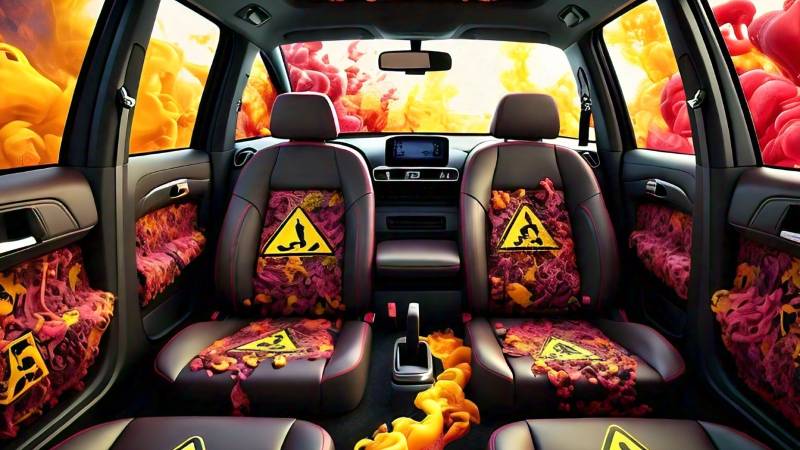A new peer-reviewed study published in Environmental Science & Technology has found that the air inside all personal vehicles is polluted with harmful flame retardants, including those known or suspected to cause cancer. These chemicals are added by car manufacturers to meet an outdated federal flammability standard, which has no proven fire-safety benefit.
Exposure to Flame Retardants: A Significant Public Health Issue
The study, led by Rebecca Hoehn, a scientist at Duke University, detected flame retardants inside the cabins of 101 cars (model year 2015 or newer) from across the U.S. The researchers found that 99 percent of cars contained tris (1-chloro-isopropyl) phosphate (TCIPP), a potential carcinogen currently under investigation by the U.S. National Toxicology Program.
“Our research found that interior materials release harmful chemicals into the cabin air of our cars,” said Hoehn. “Considering the average driver spends about an hour in the car every day, this is a significant public health issue. It’s particularly concerning for drivers with longer commutes as well as child passengers, who breathe more air pound for pound than adults.”
Outdated Flammability Standard Leads to Unnecessary Exposure
Flame retardants are added to seat foam to meet the U.S. National Highway Traffic Safety Administration (NHTSA) Federal Motor Vehicle Safety Standard (FMVSS) 302, an open-flame flammability standard that was first introduced in the 1970s and remains unchanged. However, this standard has been criticized for its lack of proven fire-safety benefits.
Patrick Morrison, who oversees Health and Safety for 350,000 U.S. and Canadian firefighters at the International Association of Fire Fighters, stated, “Firefighters are concerned that flame retardants contribute to their very high cancer rates. Filling products with these harmful chemicals does little to prevent fires for most uses and instead makes the blazes smokier and more toxic for victims, and especially for first responders. I urge NHTSA to update their flammability standard to be met without flame retardant chemicals inside vehicles.”
The study’s findings highlight the need for updated flammability standards that prioritize public health and reduce exposure to harmful chemicals in personal vehicles. Until such changes are implemented, commuters and children may be at risk of exposure to flame retardants linked to cancer, neurological, and reproductive harms.


